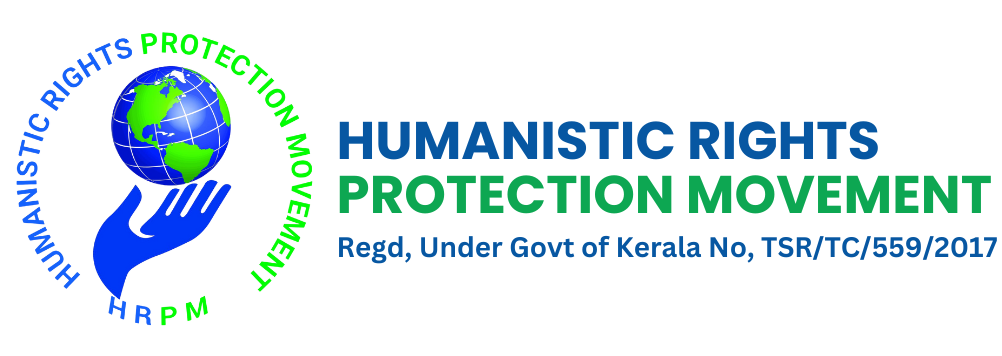Protecting human rights is the cornerstone of a fair and just society. In India, every citizen is entitled to fundamental rights, and any violation of these rights should be addressed without delay. The Humanistic Rights Protection Movement (HRPM) works tirelessly to ensure that individuals are aware of their rights and empowered to take action.
If you or someone you know has experienced a human rights violation, this guide will walk you through the exact steps to file a complaint—from gathering evidence to following up for justice.
—
What is a Human Rights Violation?
A human rights violation occurs when an individual’s legally protected freedoms are infringed upon. These include:
The right to life and liberty
Freedom of speech and expression
Protection against discrimination
The right to equality before the law
Protection from torture or degrading treatment
Violations can be committed by state authorities (police, government officials) or private entities (employers, individuals).
—
Step-by-Step Process to File a Human Rights Violation Complaint in India
—
Step 1: Identify the Violation
Before filing a complaint, you must clearly identify:
What right was violated
When and where the incident occurred
Who was responsible
Tip from HRPM: Write down all details as soon as possible, while your memory is fresh.
—
Step 2: Gather Strong Evidence
A well-documented case increases your chances of success. Evidence can include:
Written statements
Photographs or videos
Medical reports (if injury occurred)
Copies of relevant documents
Witness details and testimonies
The HRPM team often assists victims in collecting and organizing evidence before filing.
—
Step 3: Choose the Correct Authority
In India, human rights complaints can be filed with:
National Human Rights Commission (NHRC) – for central or national-level matters
State Human Rights Commission (SHRC) – for issues under state jurisdiction
HRPM Support Cell – to guide victims through the complaint process and legal follow-up
Important: Complaints must be filed within one year of the incident.
—
Step 4: Draft a Clear and Concise Complaint
Your complaint should include:
1. Your name, address, and contact details
2. Details of the violation (what happened, when, and where)
3. Names of individuals or authorities involved
4. Evidence list
5. Any previous actions taken to resolve the issue
HRPM Tip: Avoid emotional or aggressive language; focus on facts.
—
Step 5: Submit the Complaint
You can file your complaint in three main ways:
1. Online
Visit the NHRC website: https://nhrc.nic.in
Click “Register Complaint” and fill in the details
Upload evidence documents
2. By Post
Write your complaint letter and send it to:
The Chairperson, National Human Rights Commission, Manav Adhikar Bhawan, Block-C, GPO Complex, INA, New Delhi – 110023
3. Through HRPM
Contact HRPM’s Thrissur office or visit HRPM.in for assistance
HRPM volunteers can help in drafting, formatting, and submitting your case to the right authority
—
Step 6: Keep a Record of All Submissions
Always keep:
A copy of your complaint
Submission receipts (email confirmation, postal tracking)
Notes on follow-up dates
HRPM recommends creating a simple folder—physical or digital—to store everything in one place.
—
Step 7: Follow Up
Authorities may take time to investigate, but regular follow-ups show that you are committed.
For NHRC/SHRC complaints, check the case status on their respective websites
If you filed through HRPM, their team can update you on developments and next steps
Tips for a Successful Submission
1. Be Specific – Avoid vague allegations; provide dates, times, and names.
2. Stay Within the Deadline – Complaints after one year are usually dismissed unless you show valid reasons for the delay.
3. Use Proper Channels – Filing with the wrong authority can delay your case.
4. Stay Professional – Respectful language can help in getting a fair hearing.
5. Seek Support – Organizations like HRPM can provide legal aid, moral support, and procedural guidance.
How HRPM Helps Victims of Human Rights Violations
The Humanistic Rights Protection Movement:
Educates citizens on their legal rights
Assists in collecting and preserving evidence
Guides complainants in drafting clear and strong cases
Follows up on complaints to ensure they are not ignored
Raises public awareness about ongoing human rights challenges
By becoming an HRPM member, you can not only protect your own rights but also stand up for others facing injustice.
Conclusion
Filing a human rights violation complaint in India may seem intimidating, but with the right guidance and persistence, justice is possible. By understanding the process, preparing strong evidence, and seeking support from trusted organizations like HRPM, you can ensure your voice is heard.
Every complaint matters not just for personal justice, but for building a society where human rights are respected and protected. If you’re ready to take action, visit HRPM.in and connect with a team dedicated to defending your rights.



